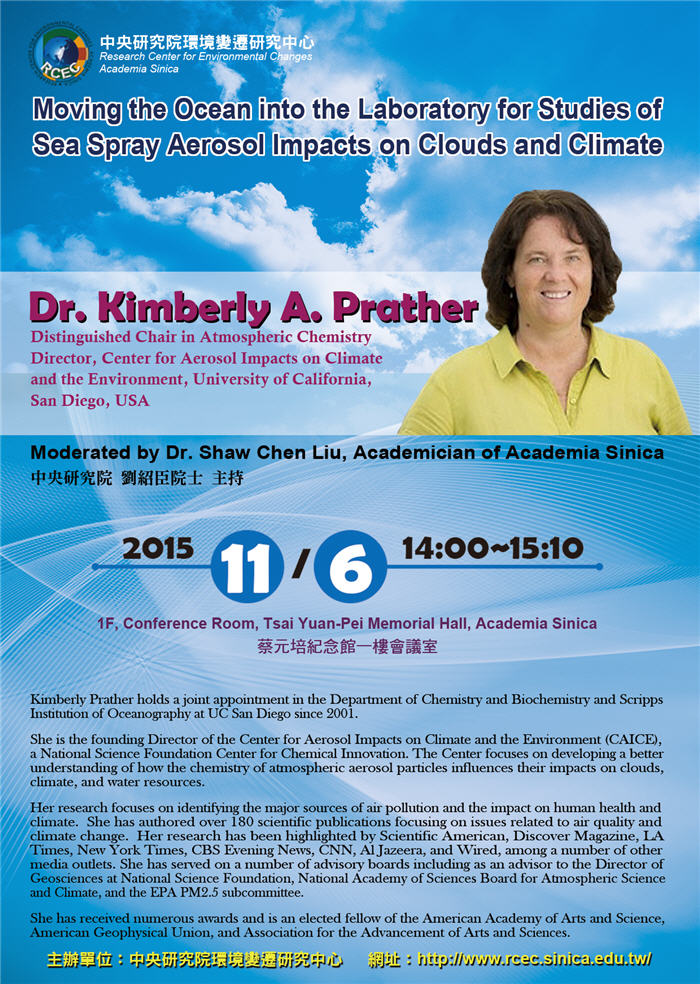

2015.11.06 14:00-16:00
1F Conference Room, Tsai Yuan-Pei Memorial Hall
Dr. Kimberly A. Prather
Distinguished Chair in Atmospheric Chemistry Director, Center for Aerosol Impacts on Climate and the Environment, University of California, San Diego
Abstract:
The ocean plays a large but highly uncertain role in affecting clouds and climate, generating sea spray aerosols that can directly impact climate by scattering solar radiation and indirectly through nucleating clouds. A tremendous amount has been learned about these interactions over decades of marine studies, however the goal of establishing robust relationships between seawater composition and sea spray climate properties has remained elusive. Much of the impediment stems from difficulties associated with unraveling the impacts of nascent sea spray and background marine aerosols which have been shown to dominate field measurements. In an effort to advance our understanding of nascent sea spray properties, we have developed a new approach for studying this issue in a newly developed ocean-atmosphere facility equipped with breaking waves. After establishing extremely low background aerosol concentrations (< 1 per cc), studies have probed the size distribution and chemical mixing state of sea spray aerosols produced by breaking waves in natural seawater. The critical importance of using bubble size distributions representative of real breaking waves to generate sea spray aerosol (SSA) is discussed. Using a combination of techniques probing individual particle composition and morphology including aerosol time-of-flight mass spectrometry (ATOFMS), scanning tunnel x-ray microscopy (STXM), and electron microscopy, four major sea spray particle types are prevalent in all studies, consisting of sea salt, mixed sea salt and biogenic organic species, biogenic organic species, and primary biological aerosol particles (PBAP). Results from studies aimed at probing how changes in seawater composition due to biological activity impact sea spray aerosol composition and climate properties will be discussed.
